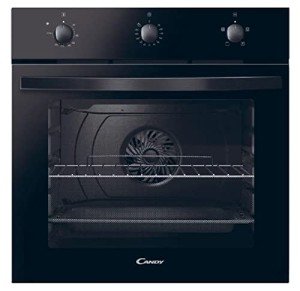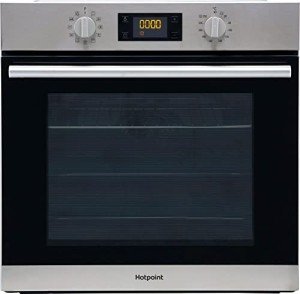10 Of The Top Mobile Apps To Single Oven Electric Fan
페이지 정보
작성자 Melody Weymouth 댓글 0건 조회 2회 작성일 25-01-22 07:28필드값 출력
본문
 What Is a Single Oven Electric Fan?
What Is a Single Oven Electric Fan?Single oven electric fan is a type of cooking appliance that makes use of an internal fan to distribute hot air evenly throughout the oven cavity. This can help eliminate hot spots, and improve the overall cooking outcomes.
 Does your oven has fans? If yes, does it make certain areas of the oven hotter or colder than others to maintain a certain temperature?
Does your oven has fans? If yes, does it make certain areas of the oven hotter or colder than others to maintain a certain temperature?Functions
Oven functions, also known as cooking settings or cooking modes provide a range of oven settings that are pre-programmed to meet a variety of recipes and cooking needs. These features control the operation of the heating elements and the fan in the oven, allowing for more precise and reliable results.
Most ovens are classified as "fan assisted" which means that when the oven element heats, there is an air-flow system which circulates hot air around the oven's cavity to assist in cooking food. This function reduces preheating times and provides uniform cooking. In an oven, there are typically two fans: one that distributes hot air for cooking and another one that cools the oven. The cooling fan is controlled by a thermoelectric switch. It turns on automatically when the thermostat knob is not set to off.
Functionality for Convenience
Ovens are able to be equipped with a variety of features that make them more comfortable to use, including the defrost mode which uses low temperatures to melt frozen foods without cooking them. This speeds up the defrosting and stops food from drying out or becoming partially cooked. The reheating mode is beneficial as it employs a gentle heat to reheat foods, helping to retain their flavor and texture.
Other useful features include a child lock function which locks the control panel, which prevents children from gaining access or altering the oven's settings. A minute minder is a useful function that can be used independently of the cooking functions. It turns off the oven when an amount of time has passed. This helps you avoid forgetting to shut it off.
A multi-functional oven is ideal for those who like to cook different dishes regularly. A fan oven that has a roast function enables you to cook various meats and vegetables on several racks simultaneously which makes it ideal for Sunday lunches or family meals. You can also utilize the grill and bake function to create a golden crust for cakes, casseroles and potatoes.
Design
Built in electric single ovens are available in a variety of sizes and styles to meet your kitchen's cooking requirements. Certain models come with additional features such as self-cleaning, delay start or warm hold. These functions can help you save time and effort. Read reviews to get a better idea of the way these ovens are reviewed by other users.
A fan oven has an air circulator built-in that allows for more even cooking and quicker results than traditional ovens. This is particularly useful when cooking dishes that contain a lot of fat, like roasts or pies. You can easily tell if an oven is a fan model by inspecting the control panel. Look for a three-pronged or fan icon that is surrounded by an elongated circle. The conventional ovens are usually marked differently and might not have the fan function at all.
Blomberg's A-rated integrated single oven is large in capacity of 71L. It is designed to perform as well as looks. The oven comes with a variety of settings, including grill and fan-powered cookery. It also comes with a light-only setting to make cleaning simpler. It also features a touch-control programmable clock/timer and a simple to clean enamel interior.
Energy Efficiency
In terms of household appliances the oven is a minor contributor to overall electricity usage in comparison to other appliances like fridges and air conditioners. However, the type of oven and cooking method used significantly impact energy costs. Fortunately, many of the newest single range oven ovens are designed to be more energy efficient than previous models. This means less energy usage and can save you money on your utility bill.
The main difference between a traditional and a fan oven is that a traditional oven is only one heating element, while the fan oven includes heating elements as well as a fan to circulate hot air around the food. Using a fan means that you can cook at lower temperatures, which also reduces energy use. Additionally, a fan can cut down on baking times.
Another way to make sure you're getting an oven electric fan that is most energy efficient is to search for one with a brushless DC motor. This motor integrated single oven technology is more efficient than previous, non-brushless models. It also reduces noise levels.
In addition to the wattage rating, you'll want to pay attention to the energy rating, which must be displayed on the appliance or in the manual. This number will provide you with an idea of the amount of energy the oven consumes when operating. You can then compare the price per kWh with your local electricity rate. It will vary depending on where you reside.
There are many elements that can impact an oven's overall electricity consumption depending on the type of food you're cooking, its temperature setting, and the length of time you cook it for. The cooking process itself can also have an effect on how much electricity it consumes, as will heating the oven prior to using it.
To maximize the efficiency of your oven shut it off when you're done using it and keep track of your usage. You can also make use of a smart meter in order to get accurate information on the amount your appliances are costing you, and explore alternatives to cooking methods that require less electricity.
Installation
There are costs to consider when installing or replacing an electric single ovens built under fan-oven, whether it's the first time or the second. They range from removing and disposing of the old appliance, to installing or upgrading outlets and utilities lines. If the new appliance requires vent hoods it is possible to install one. Find the most affordable price.
It is easy to determine the oven that you bought has fans because it will likely be marked as an option on the control panel. The fact that it's equipped with an air conditioner means that the air circulates continuously within the oven's chamber, which allows it to reach temperature faster and spread heat evenly. Conventional ovens might have different symbols on the control panel or no fan icon at all.
Before you hire an electrician to install your new single range oven oven electric fan, be sure to look at how it was wired in your home before. If the old one plugs in directly to an electrical outlet and is plugged into a power socket, it should be very simple for a professional electrician to wire it into your wiring system. If the older oven is hard-wired to a circuit breaker or switchbox, it will be more difficult. If the new model has more watts than the previous one, you will have to make sure that your circuit breakers and switches are capable of handling the extra current and that the cables are of adequate dimensions.
The cost of installation will depend on the location of your kitchen within your home. A freestanding unit that is easily moved from room to room will cost less than a wall mounted unit that requires cutting into cabinetry or a counter to set up. It is also important to consider any additional costs if you want to run gas or electricity lines or ventilation ductwork.
A straightforward electric oven electric single installation should cost no more than $70-$155 if you are replacing an existing unit in the same place. Installing an exhaust hood, and then adding a new outlet to the kitchen should cost around $300.



